Denali Uncomplicated: The Savage Alpine Trail
6 Comments
A single road penetrates Denali National Park. While it is 92 miles long, only the first 15 miles are paved and open to personal vehicles. If I was to hike only one trail along that section, the Alpine Savage Trail would be my clear choice. Until the summer of 2026, it is also the best trail in the entire park.
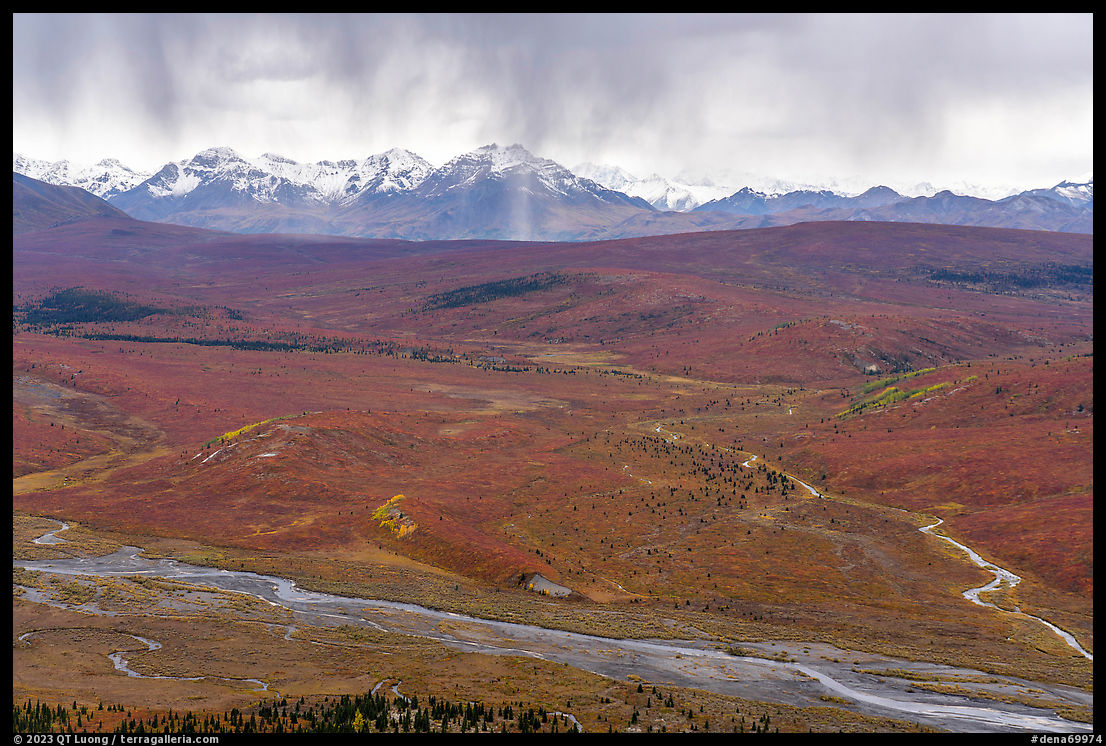
The Park Road
The Park Road crosses the Savage River at mile 15. At the eastern end of the bridge, rangers stationed at a checkpoint kiosk make sure that only park buses and a few holders of hard-to-get permits can proceed. Anyway, as of this writing, even with the park buses, the public cannot reach by road the most spectacular areas such as Polychrome Pass, Eielson, and Wonder Lake (see my write-up on the logistics of visiting Wonder Lake) In the summer of 2021, the acceleration of a landslide at Pretty Rocks (Park Road Mile 45.4) that had been going on for years caused a portion of the road to collapse to the point that adding hundreds of truckloads of gravel into the slumping road was no longer sustainable. The Park Service closed the road at mile 43 and is building a bridge to bypass the landslide, which is scheduled to be completed in the summer of 2026. This makes the bus rides on the unpaved portion of the road less attractive, and the only way to access the Wonder Lake area is via a charter flight to Kantishna where pricey lodges operate in inholdings. Once you arrive at the Savage River, you will have seen the entire section of Park Road that you can drive, and you’ll be at the top trailhead.
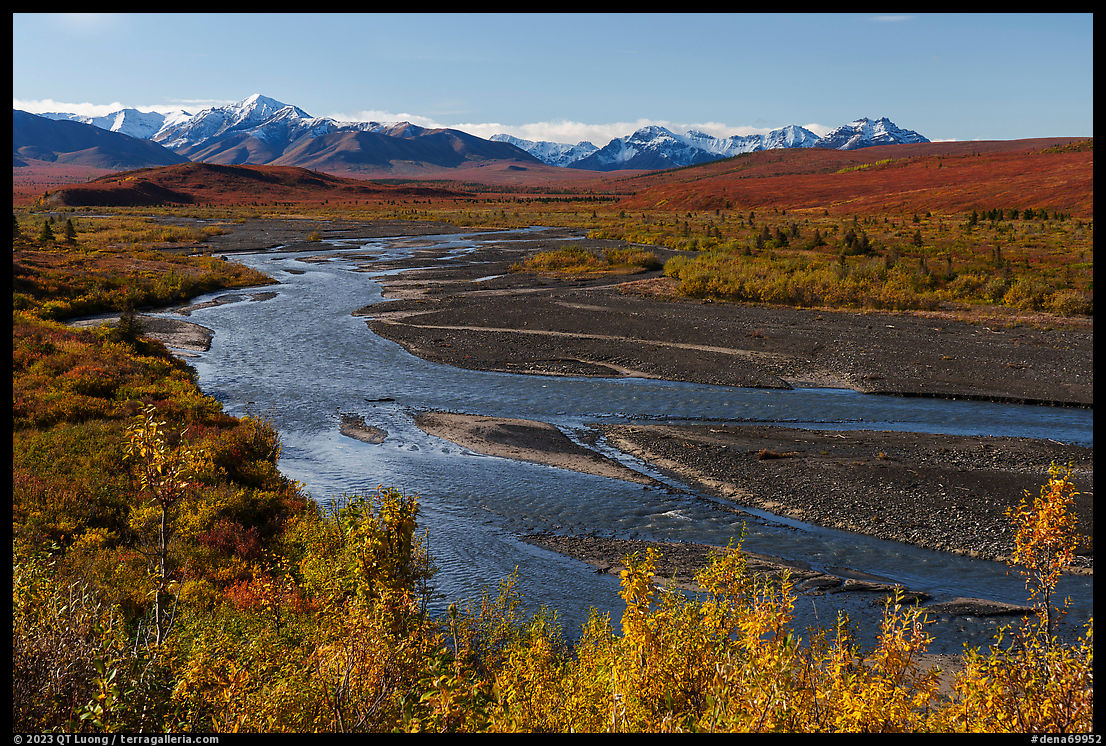
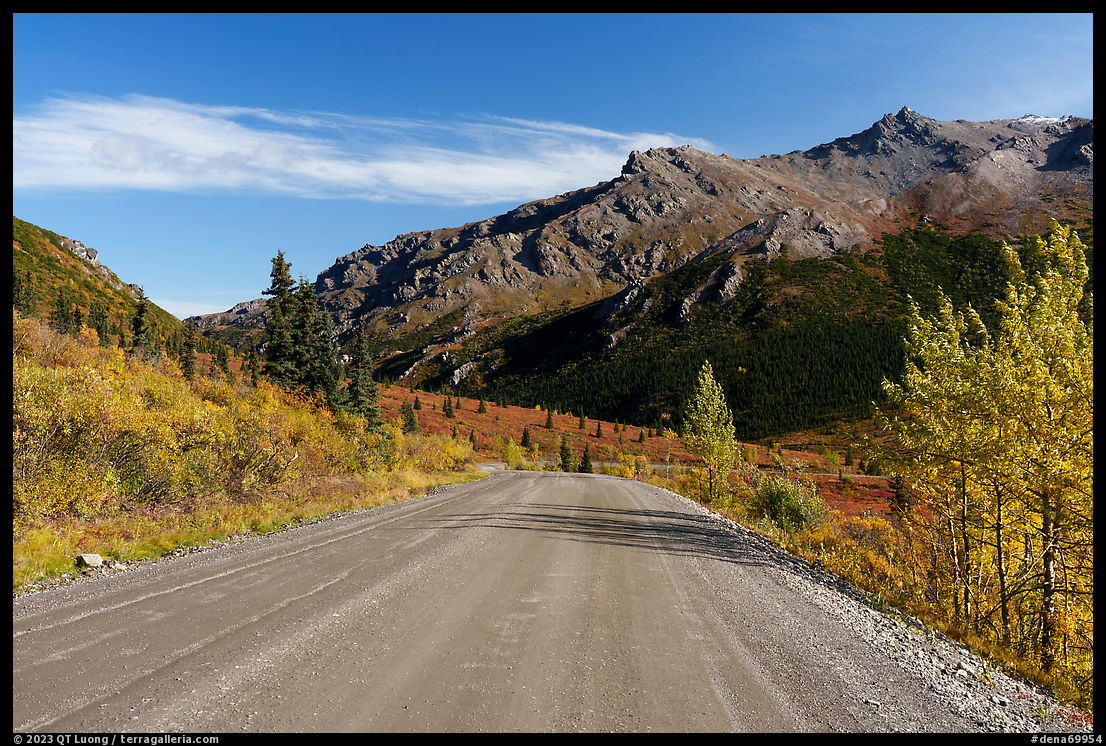
The Trails
Like in other Alaskan national parks, there are not that many designated trails in Denali National Park. Part of the allure of hiking in the park is to make your path in the vast tundra. Of all the maintained trails, the most rewarding are the two that start at the Eielson Visitor Center (Thorofare Ridge Trail and Gorge Creek Trail) but being located at Park Road mile 66, they are not currently accessible. Most trails are found along the section of road open to private vehicles, particularly the visitor center area. The easy Horseshoe Lake Trail (3 miles, 300 ft elevation gain) and longer Triple Lakes Trail (9.25 miles one-way, 1800 ft elevation gain, or out-and-back from Hwy 3 with 6 miles round-trip and 1,150 elevation gain) lead to pretty lakes located at the periphery of the park. The McKinley Station Trail (3.2 miles round-trip, 100 ft elevation gain) follows Riley Creek. However, maybe you’d like to see more mountainous views in this park. The Mount Healy Overlook Trail (5 miles round-trip, 1,800 ft elevation gain) climbs to an overlook from which you can barely see the top of Denali. Most of the trail is forested, so the main attraction is the overlook, but from there, the views of the Alaska Range mountains are distant as Denali National Park is 78 miles away. This leaves the Savage Alpine Trail as the best current hiking option. Even when the park road is fully opened, it is the top choice for sweeping views of the park without spending much time in the park or having to make a reservation for a bus since its trailheads are located along the Park Road before the Savage River.
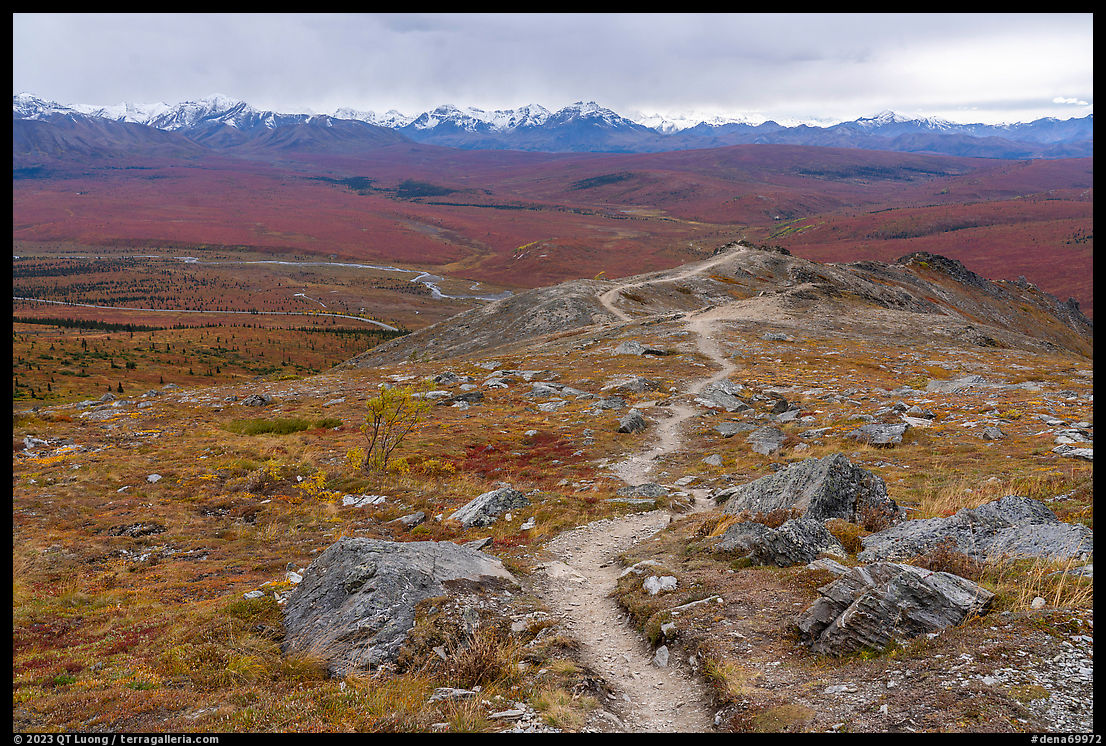
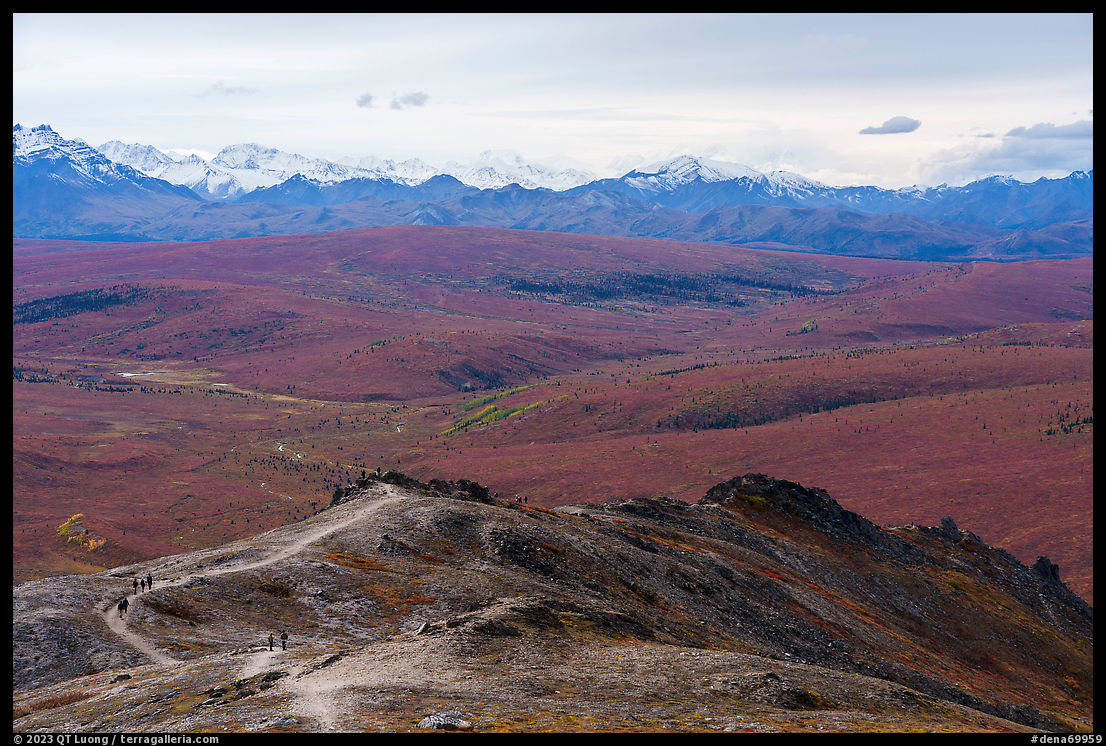
The Savage Alpine Trail
From the Savage River area, you are 15 miles closer to Denali than from the entrance, which isn’t that significant considering that we are talking 63 miles instead of 78 miles. What makes the trail more attractive than the Mount Healy Overlook Trail is that you are hiking entirely above the tree line with more varied and interesting terrain. It is a 4-mile point-to-point hike with two trailheads: the Mountain Vista Picnic Area (Park Road mile 13) and the Savage River parking lot (Park Road mile 15) next to the Savage River and near the Savage River Check Station. The latter has room only for two dozen cars. By the time I got there in the late morning, it was full, however, I found space at a parking lot on the other side of the river, just past the checkpoint. That second parking lot was probably meant for people who continue on Park Road by foot or bike, but the rangers allowed it to be used for overflow parking. To hike the entirety of the trail, you’d have to walk two miles along the park road or ride the free Savage River Shuttle. Keeping things easy, I hiked to the highest point on the trail from the Savage River parking lot and went down the same way (3.5 miles round-trip, 1700 ft elevation gain). The first portion of the trail consists of steep switchbacks with views of the Savage River Valley. After less than a quarter mile and 200 ft elevation gain, a rocky knoll already provided considerably more expensive vistas than the trailhead and also helped frame the landscape. It would be a good spot to photograph Denali with a long telephoto.
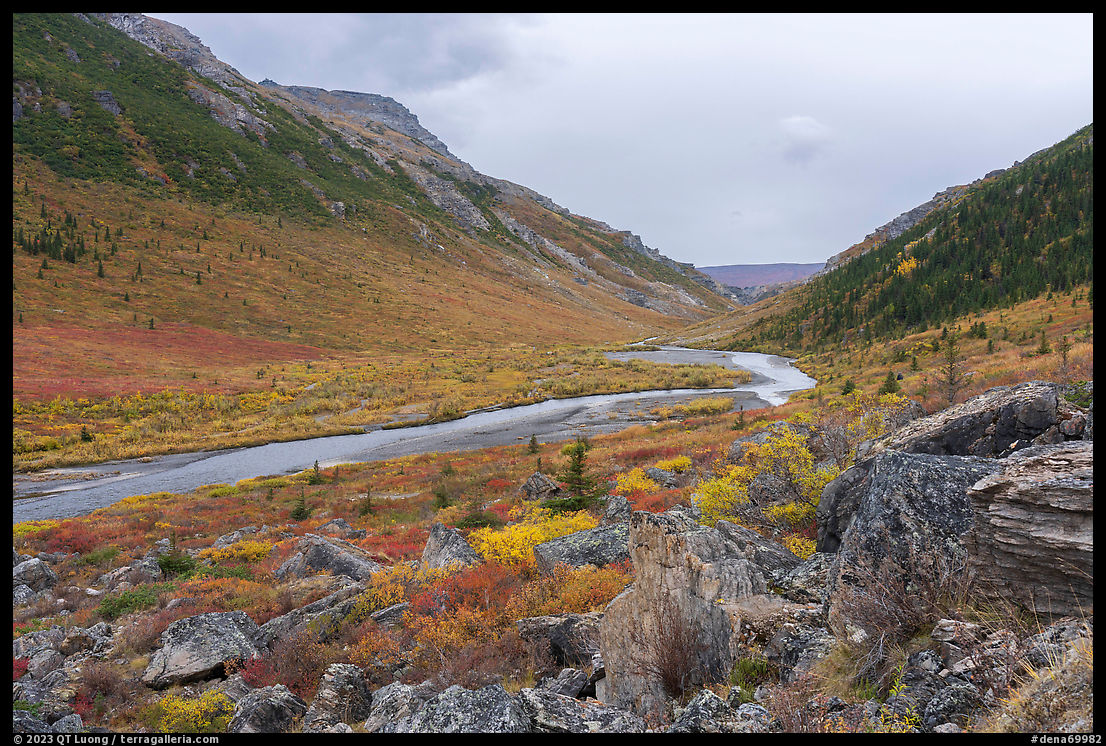
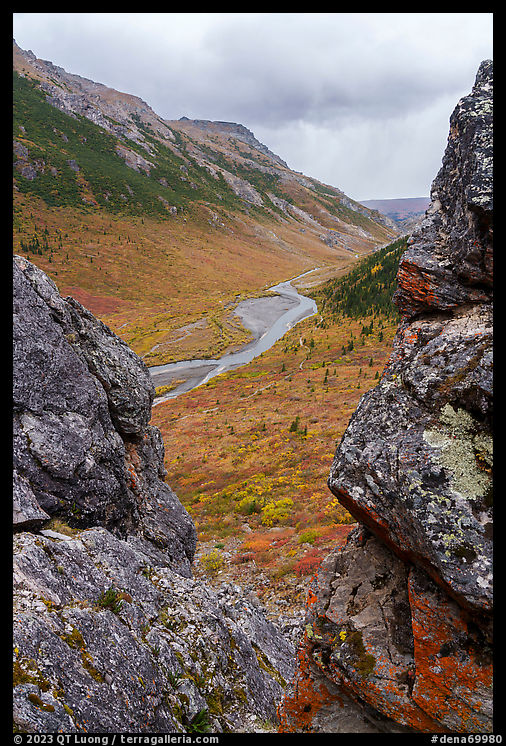
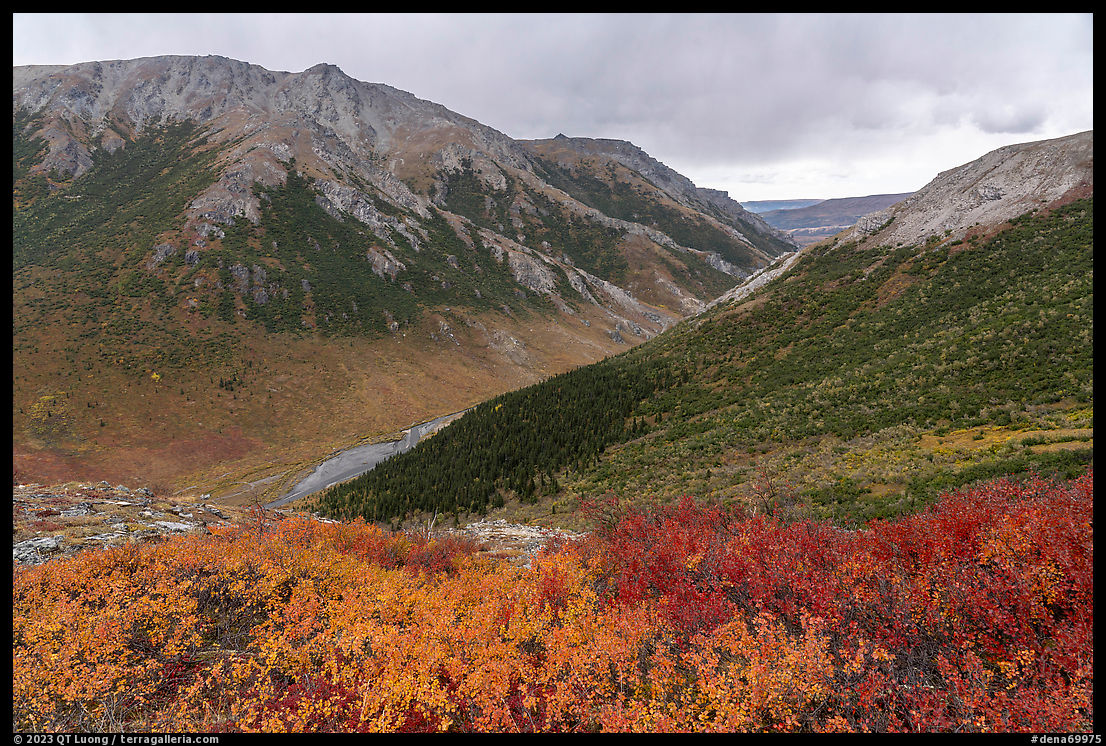
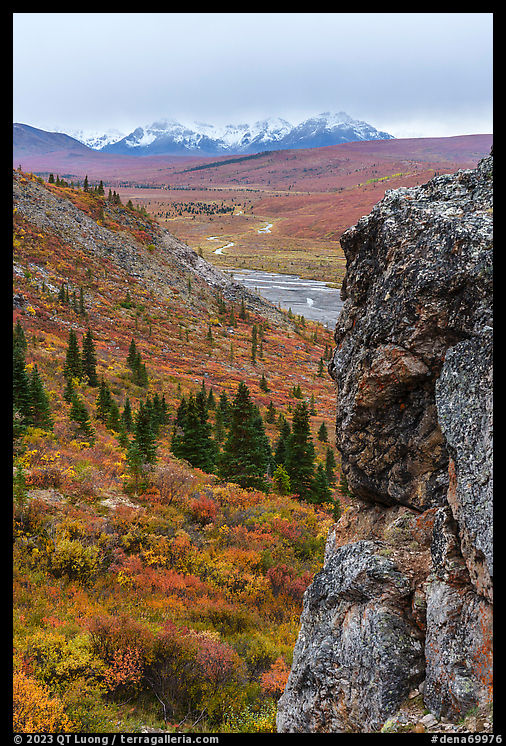
After about 0.7 miles and 750 ft elevation gain, a first overlook along a rocky ridge provides panoramic views. Due to the foothill mountains, there are only a limited number of spots along the Park Road from which Denali is visible, but the higher elevation of the Savage Alpine Trail provides good views of the mountain if the weather is clear – a big if. When I started the hike, the skies were mostly clear, however, Denali was not visible from the parking lot. By the time I got to the first overlook, clouds had moved in, obscuring the distant Alaska Range mountains, including Denali. I finished the hike in light rain. Yet, the views were still spectacular.
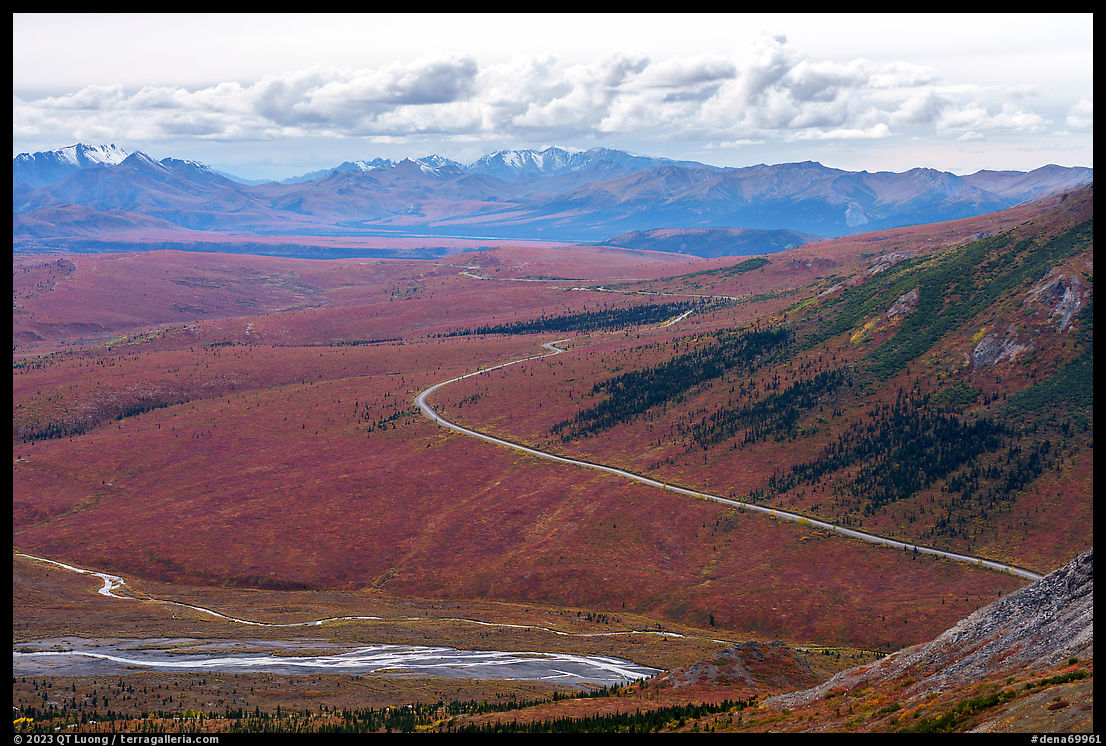
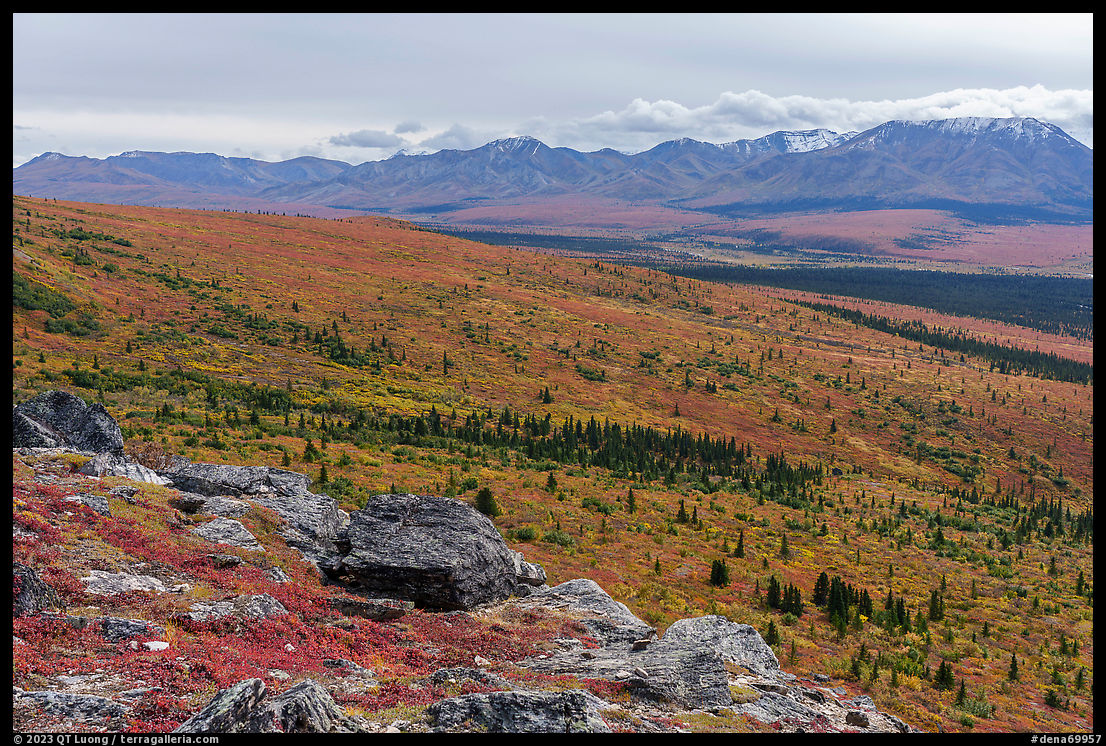
The trail continued to gain elevation at a more modest rate. At a trail split a mile later, the upper branch is an unofficial trail, whereas the main train descends to a second overlook area with rocks. Except for some alpine terrain, in areas of lower latitudes fall colors are confined to leaves on trees and shrubs, but in Alaska fall colors are also found on every tiny leaf on the ground, making the tundra a striking crimson carpet from a distance, and a tapestry of color at a closer range. At the park entrance near Riley Creek, on Sept 9, the aspen trees were barely starting to turn yellow. However, at Savage River, the fall color was nearly at its peak.
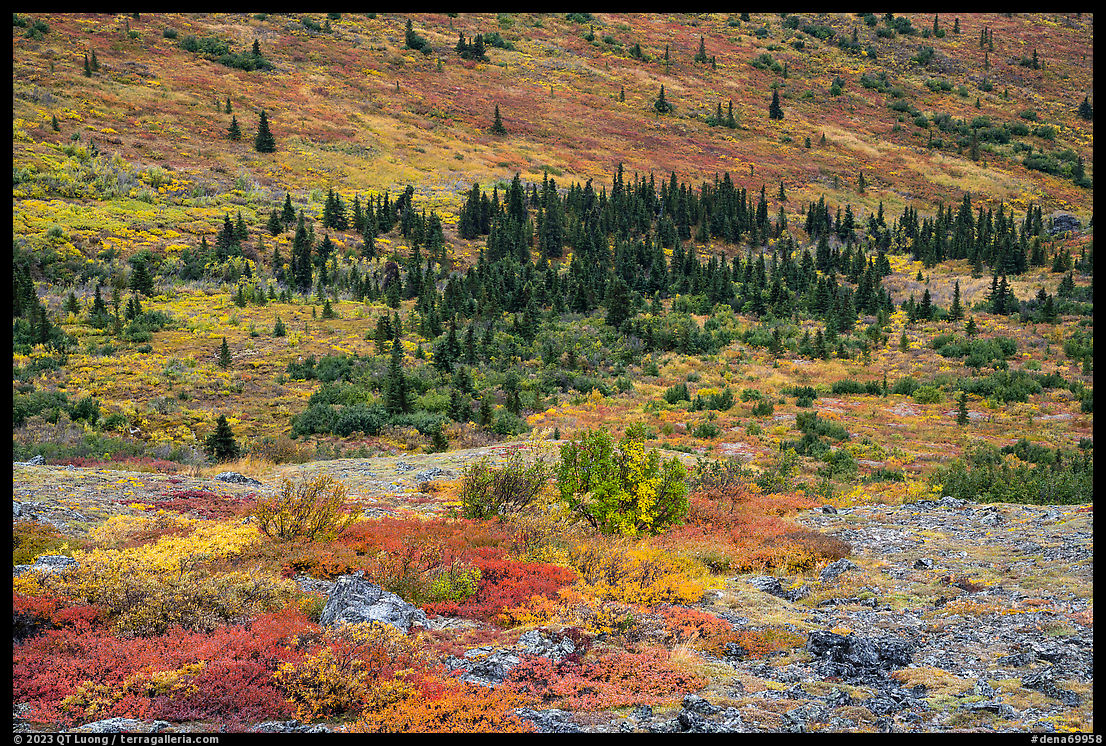
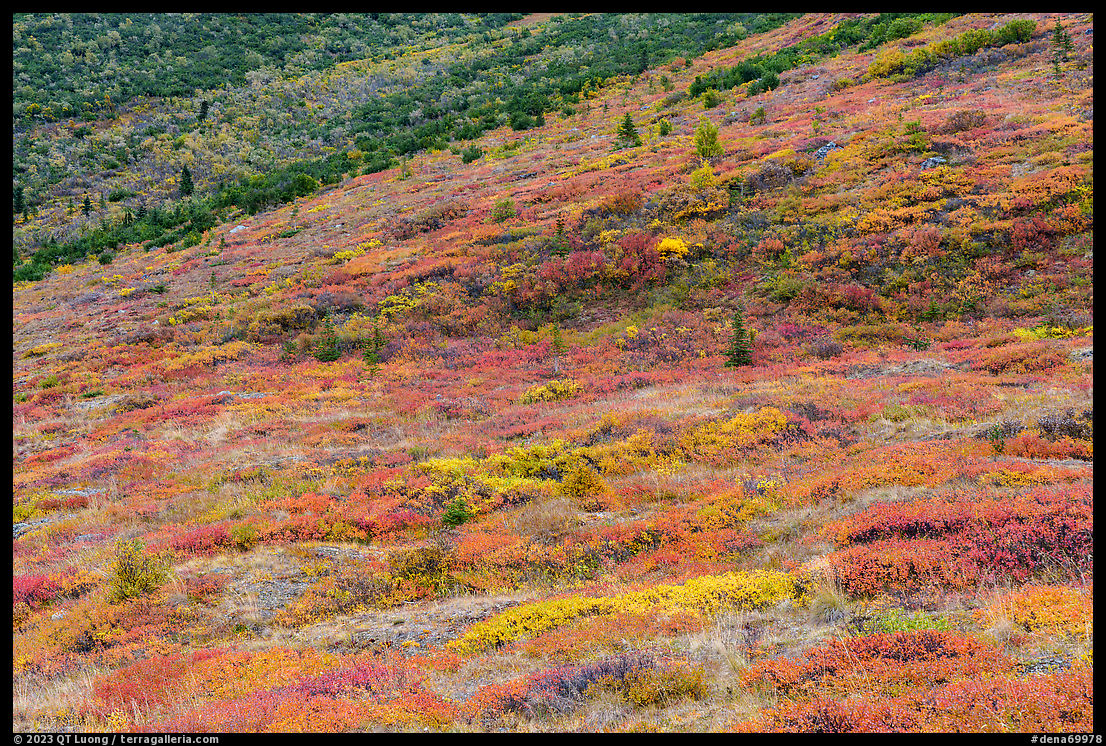
Taking advantage of the soft light, I started to concentrate my attention on the tundra. Each square foot of it is alive with incredibly diverse miniature plant life. One could spend hours looking at the ground.
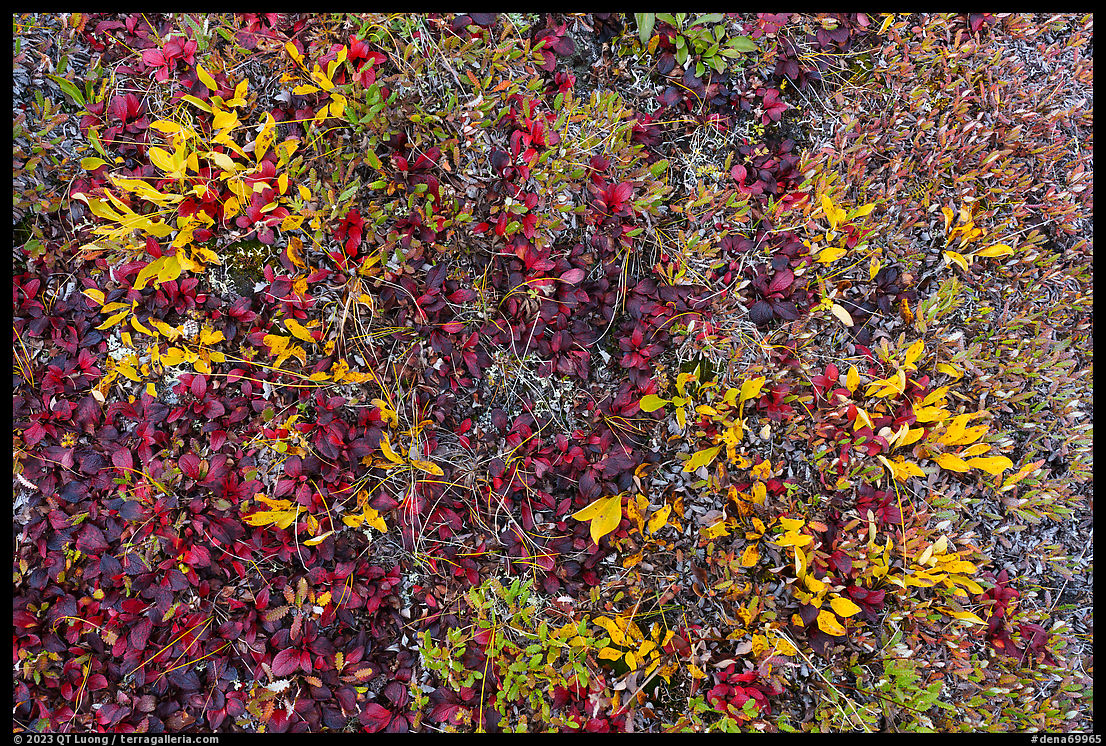
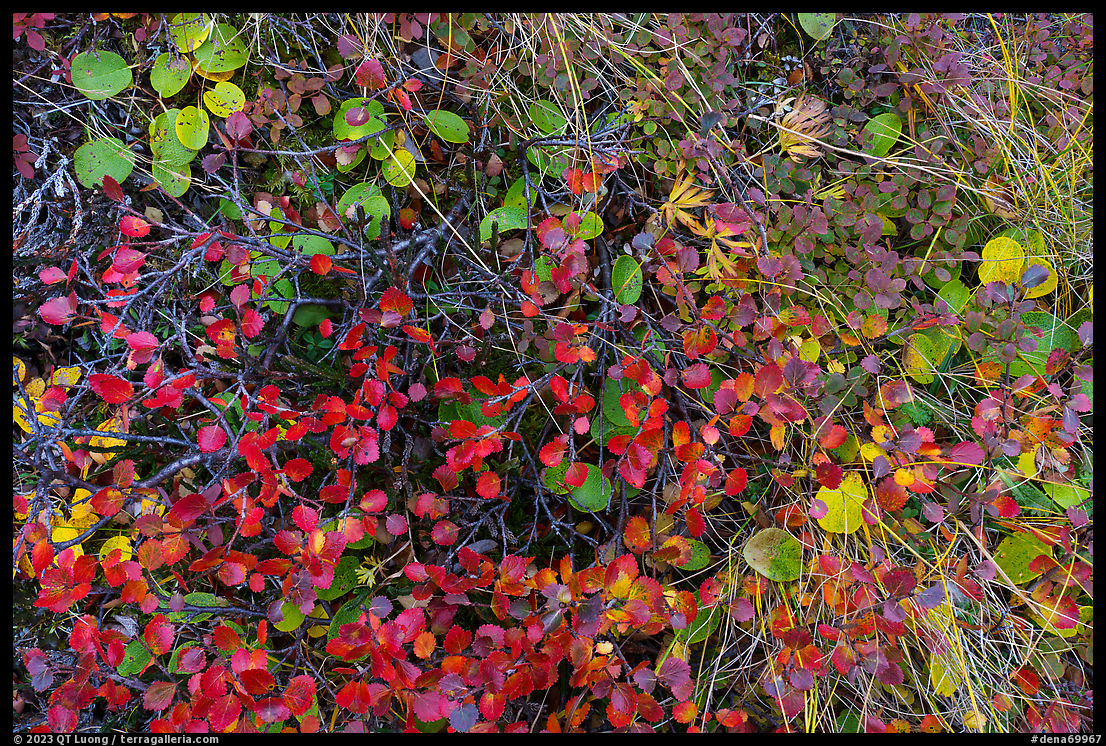
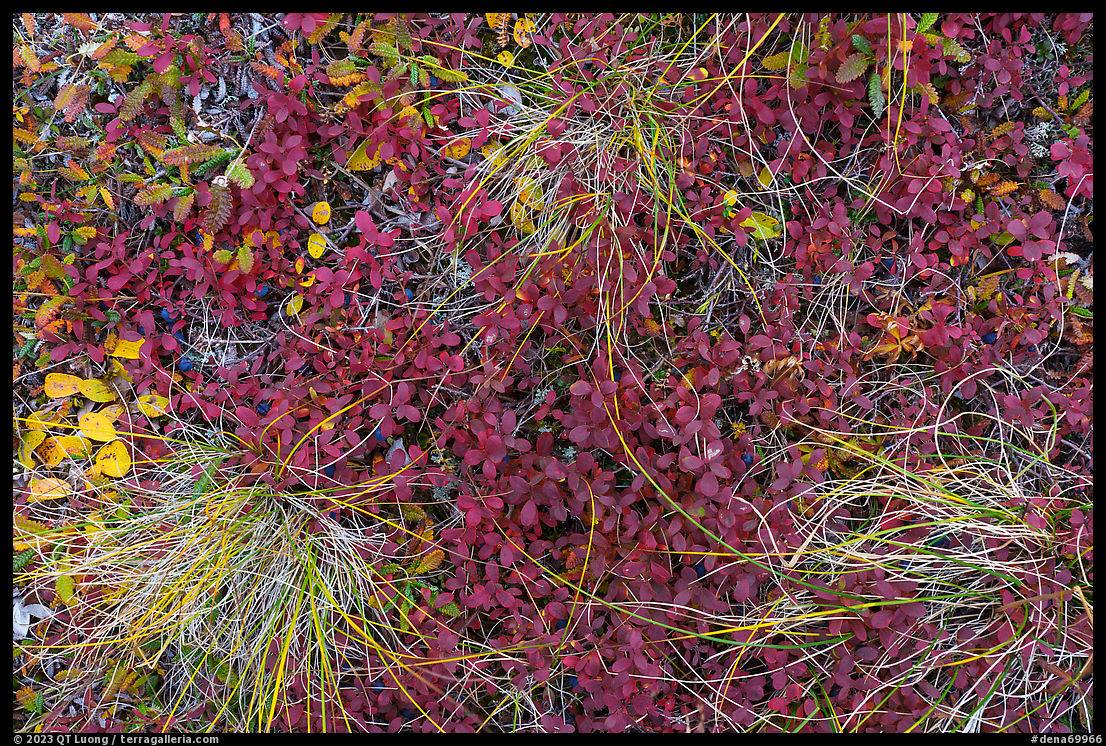
Before Mount McKinley National Park was established in 1917, the American public had learned about the proposed park through an article in the January 1917 issue of National Geographic Magazine titled A Game Country Without Rival in America. Having previously hiked mostly cross-country in the park, I was surprised by the popularity of the Savage Alpine Trail, on which I saw many dozens of hikers. Yet, even such heavy trail traffic didn’t seem to scare away the wildlife. Dall sheep stayed high above, but ptarmigan birds scurried in large numbers very close to the trail.
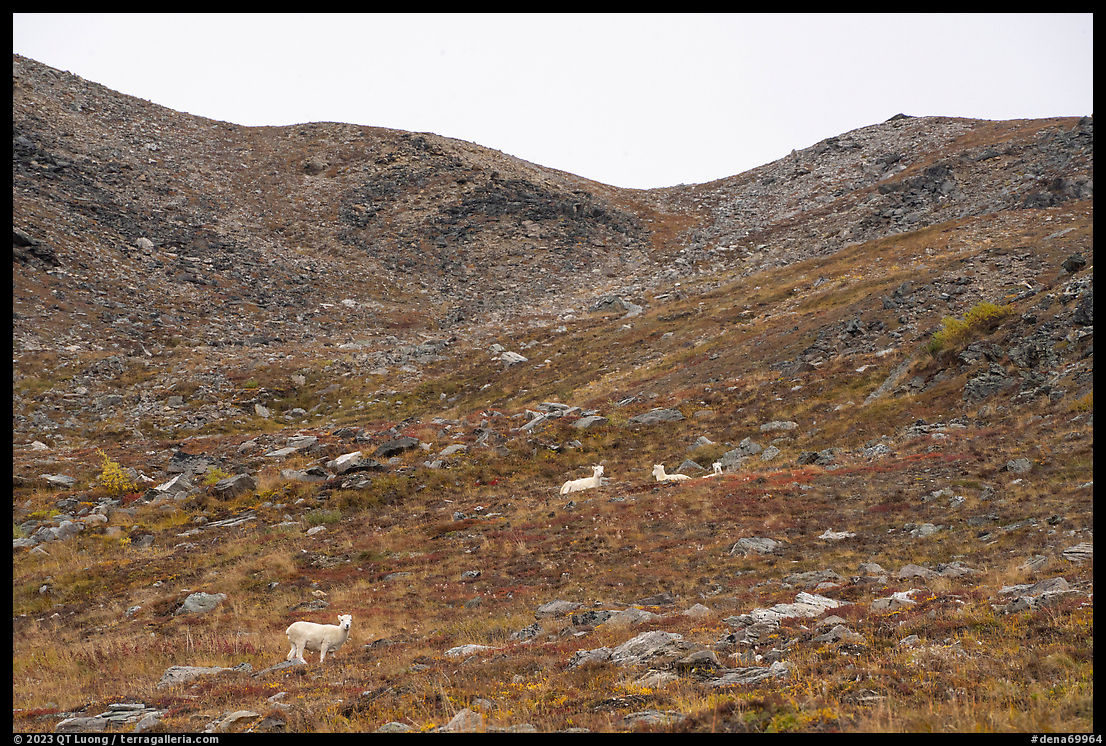
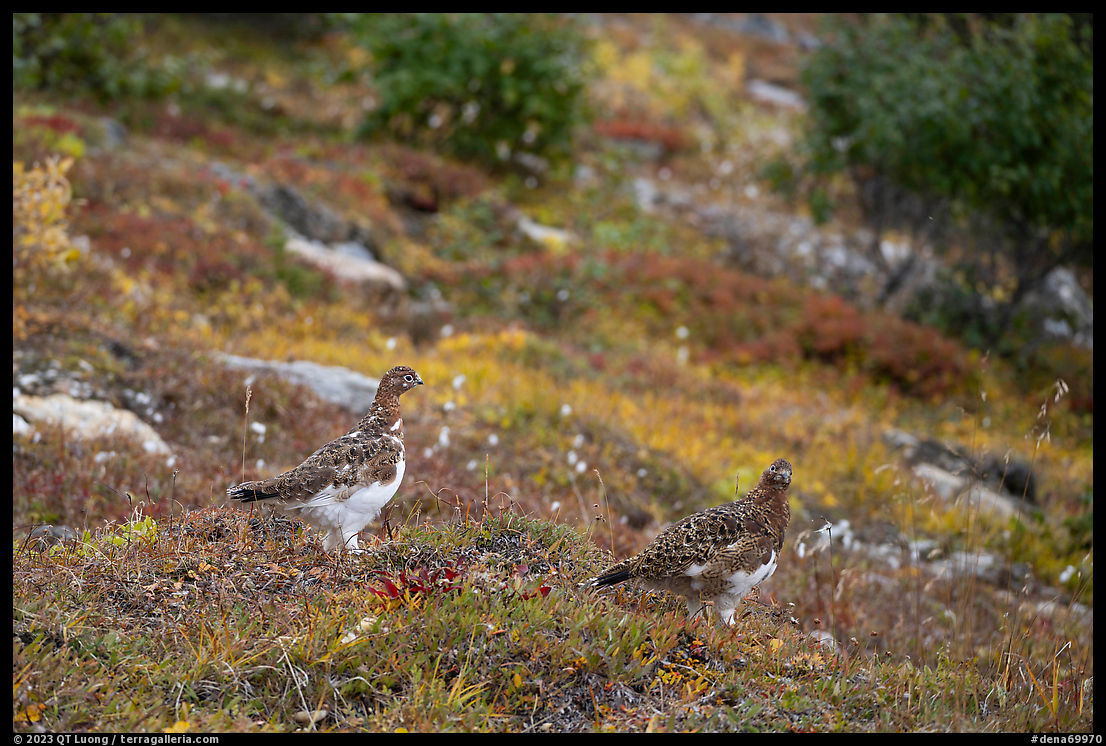
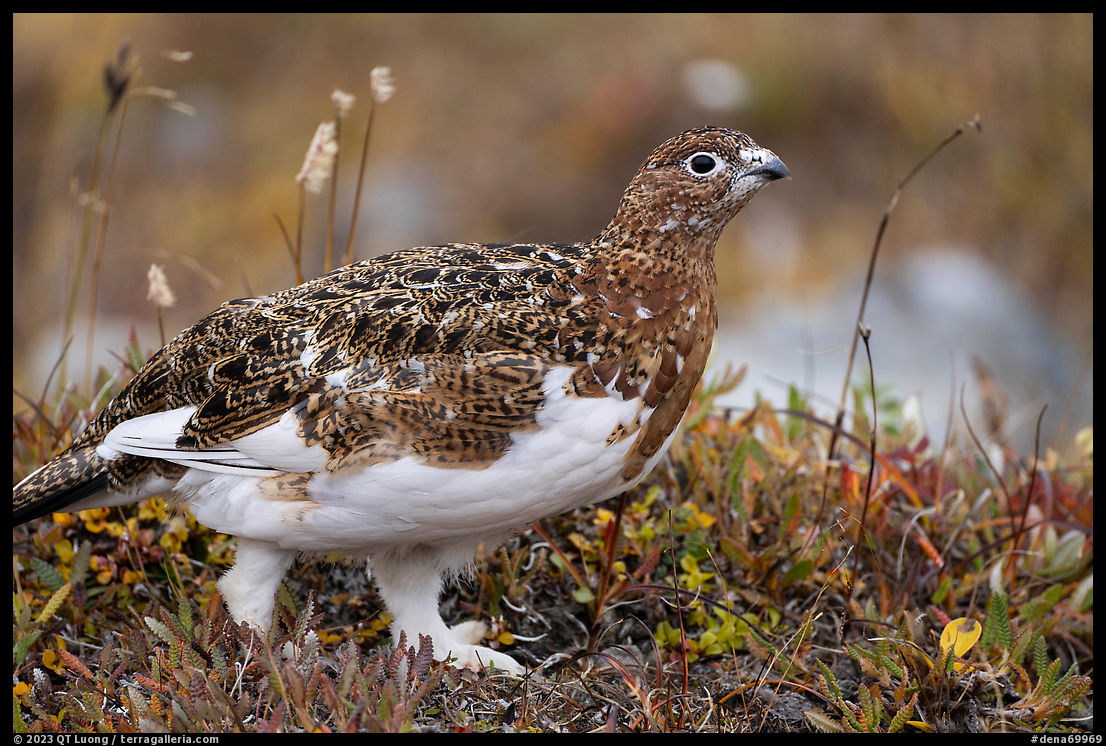
The uncomplicated logistics of hiking the Savage Alpine Trail were just what we needed for a quick improvised visit. Although the terrain was familiar, the trail gave a satisfying sample of Denali National Park, which I have now visited at least one time in each of the four last decades and five different months.
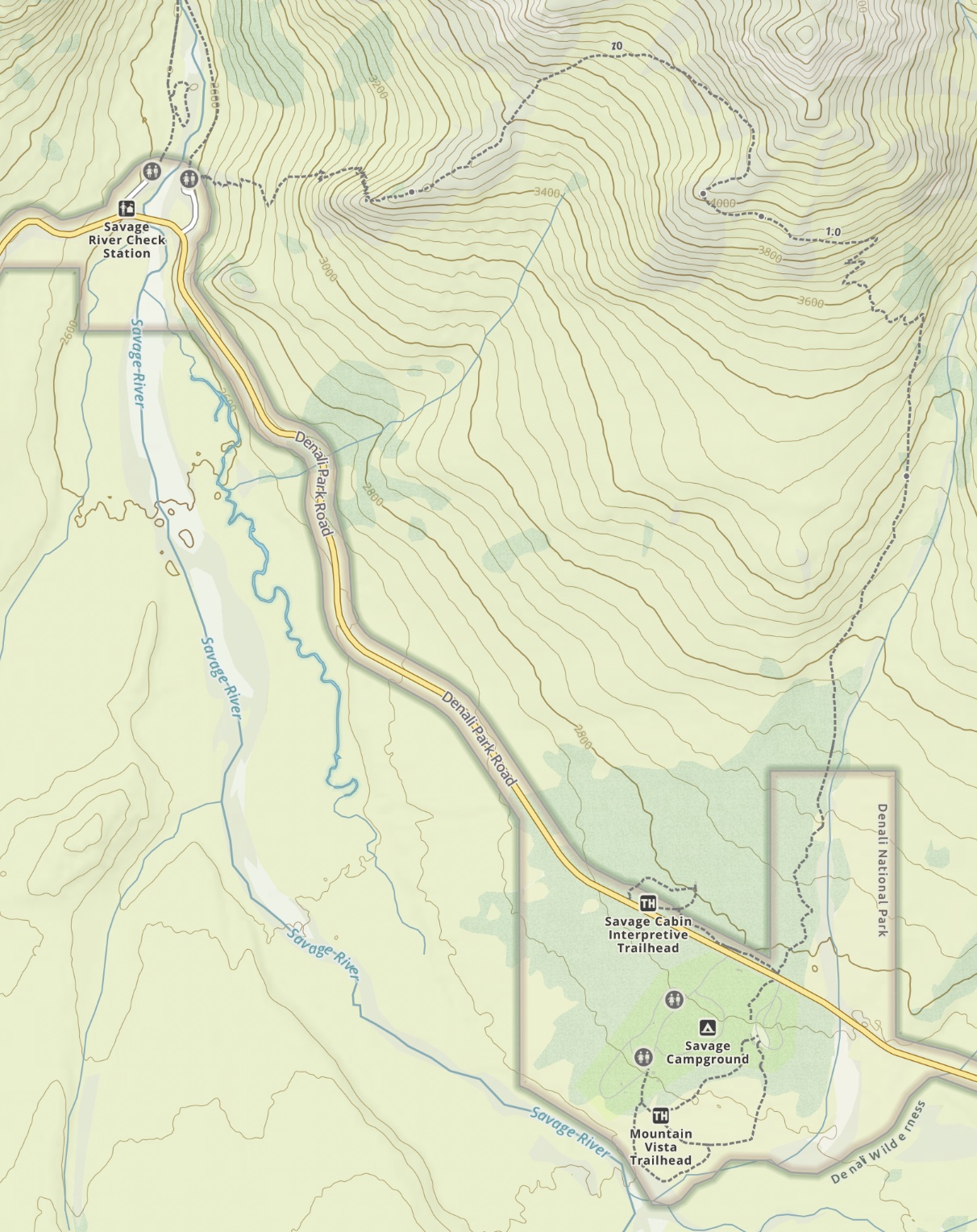
Our initial plan was to fly to Anaktuvuk Pass the day after arriving in Fairbanks. However, Wright Air Service had canceled the regularly scheduled commuter flight because all their pilots were engaged in charter flights that day. Instead of hanging out in Fairbanks, we decided to spend a day (and two shortened nights) in Denali National Park. September is a busy hunting season in Alaska. After driving out of the airport in Fairbanks, the first thing we did was to look for an isobutane fuel canister for my camp stove since you cannot fly with them even in checked luggage. At the Fred Meyer supermarket close to the airport, the camping fuel shelves were empty. The staff suggested we check the other store on the other side of town. It had a few camp stove canisters left, but they were all of the incompatible Coleman type. Since it was past 11 pm, we were about to give up, when we drove by Walmart. A single isobutane fuel canister was left on the shelves. Traveling light for this trip, the only insulated garment I had packed was a down jacket, but seeing how rainy the weather was, second thoughts agitated me. The day after Denali National Park, I returned to the huge Walmart to look for a fleece jacket. I bought the last one left in the entire store, an ill-fitting XL.
Autumn in Alaska II, part 1 of 5: 1 | 2 | 3 | 4 | 5


Did you make it into Anatuvuk Pass or were you weathered out?
Hello Joe, you will see in the next post that we made it!
I first visited Denali National Park in the Fall of 2007 and was pleasantly surprised to see so much beautiful and varied color.
Hello Dennis, Denali was also where Alaska fall color hit me. I had visited Gates of the Arctic just before, but for some reason the color there was generally more subdued.
Very nice article. We were there a few years ago and it rained every day. Did the bus tours. Got some nice views of wildlife and a few decent photos.
The rain also appears to follow me whenever I go to Alaska. Glad you enjoyed your visit nevertheless.